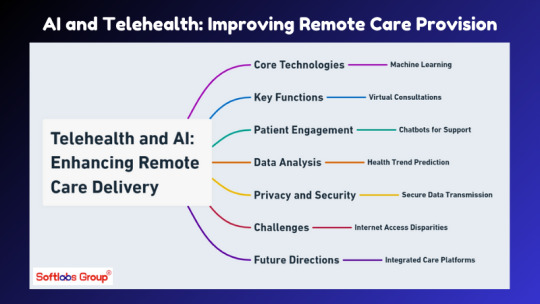#remotecareers
Explore tagged Tumblr posts
Text

Looking for work-from-home jobs in the Philippines? Check out our Xcruit job portal! We offer a variety of remote opportunities across different industries. Find flexible, rewarding positions that let you balance work and life. Start your journey to a fulfilling remote career today and apply for your perfect job!
0 notes
Photo

Unlock the Remote Earners' Paradise: A Voyage to High-Paying Careers Are you ready to embark on a quest that will lead you to fulfilling remote careers, paid in the coveted currencies of developed na... https://bit.ly/4cj8Ou6/
#JobsTips#CareerGuide#digitalnomads#globaljobsearch#highpayingjobs#jobseekers#onlinejobs#remotecareers#remotework#workfromhome
0 notes
Text
The Art of Charitable Giving | Strategies to Repay Debt and Start Building Wealth
youtube
#CharitableGiving#TaxBenefits#ImpactfulDonations#RemoteWork#WorkFromHome#RemoteProductivity#DigitalNomad#RemoteJob#WorkLifeBalance#VirtualOffice#RemoteCareer#RemoteTeam#RemoteWorkTips#RemoteWorkSuccess#RemoteCommunication#RemoteWorkSolutions#RemoteWorkLife#RemoteWorkTools#Youtube
5 notes
·
View notes
Text
Master the Remote Job Market: How to Prepare for Online Careers in 2024
As remote work continues to dominate in 2024, preparing for an online career is more essential than ever. The shift towards virtual jobs offers flexibility and new opportunities, but standing out in a competitive online job market requires specific strategies. Here’s how you can effectively prepare for remote careers and land your ideal online job.
1. Upgrade Your Digital Skills
In 2024, digital literacy is a must for remote work. Beyond basic computer skills, you need to be proficient in communication and collaboration tools such as Zoom, Slack, Trello, and Google Workspace. Familiarity with project management software and cloud storage systems will also give you an edge. Take time to learn or enhance these skills through online courses or tutorials, as these tools are now staples in remote job environments.
Check This Page: online job preparation
2. Build a Strong Online Presence
Your online presence is often the first impression potential employers have of you. Start by updating your LinkedIn profile, ensuring it highlights your skills and experiences relevant to remote work. Include keywords like "remote work," "virtual collaboration," and "self-management" to catch the attention of recruiters. If applicable, create an online portfolio or personal website to showcase your work, especially if you’re in creative fields like writing, design, or development. A professional and visible online presence will help you stand out.
3. Optimize Your Resume for Remote Roles
Tailor your resume to reflect your remote work capabilities. Highlight experiences that demonstrate your ability to work independently, manage your time, and collaborate with virtual teams. Mention any remote-specific tools you’ve used, such as virtual meeting platforms or cloud-based project management systems. Be sure to emphasize your results and accomplishments in past remote roles or freelance projects.
4. Prepare for Virtual Interviews
Virtual interviews are now the norm, so it’s crucial to be prepared. Test your technology beforehand—check your internet connection, camera, microphone, and any video conferencing platforms like Zoom or Google Meet. Choose a quiet, well-lit space for the interview and ensure the background is professional. Dress as you would for an in-person interview and maintain eye contact by looking at the camera, not the screen.
Checkout This Post: Career and Professional Development
5. Stay Organized and Proactive
Remote job searches can be overwhelming, so staying organized is key. Use tools like Google Calendar, Trello, or Notion to track job applications and deadlines. Set daily or weekly goals to ensure you’re consistently applying for roles, networking, and enhancing your skills. Proactivity will keep you focused and help you manage the complexities of applying for remote positions.
Conclusion
To master the remote job market in 2024, it’s essential to build relevant digital skills, create a strong online presence, optimize your resume, and prepare for virtual interviews. With these steps, you’ll be ready to navigate the evolving landscape of online careers and find a job that aligns with your lifestyle and goals. By staying organized, proactive, and adaptable, you can successfully break into the world of remote work and thrive in this flexible job market.
Related Post: Fresh Graduate Jobs
#RemoteWork#OnlineJobs#WorkFromHome#RemoteCareer#JobSearch#DigitalSkills#VirtualJobs#FreelanceLife#CareerSuccess#RemoteOpportunities#OnlineCareers#JobInterview#WorkAnywhere#RemoteWorkReady#CareerGrowth#JobSearchTips#VirtualInterview#RemoteLifestyle#StayOrganized#DigitalNomad#TechSavvy#WorkFromAnywhere#FreelanceSuccess#RemoteWorkLife#JobPreparation#OnlineJobSearch
0 notes
Text

At Toys and Wheels, we bring you the best in electric toy car for your little adventure! Electric toy cars come in sporty convertibles, rugged trucks, and a variety of them, offering hours of fun and excitement. Your child can drive like a pro, using easy-to-use controls, features, and realism. In addition to that, many of our models come equipped with remote control cars for extra fun and safety that make your child feel his parents can get closer to him. Whether cruising around the yard or showing off to friends, electric toy cars bring joy, laughter, and a whole lot of style to ride with us today!
0 notes
Text
#Freelancing101#FreelancerTips#FreelanceLife#GigEconomy#WorkFromAnywhere#DigitalNomad#RemoteWork#FreelancerLifestyle#SideHustle#EntrepreneurMindset#FreelanceCommunity#FreelanceBusiness#FreelancersOfInstagram#FreelanceJobs#FreelanceWriter#FreelanceDesigner#FreelanceDeveloper#ContentCreator#CreativeFreelancer#SelfEmployed#RemoteJobs#DigitalFreelancer#FreelanceSuccess#FreelancerTipsAndTricks#UpworkFreelancer#FiverrSeller#LinkedInFreelancer#FreelanceJourney#RemoteCareer#BeYourOwnBoss
0 notes
Text
Telemedicine - The Future of Healthcare, Navigating the Growth

In recent years, the healthcare landscape has undergone a remarkable transformation, driven by the rapid adoption of telemedicine. With its potential to revolutionize the way healthcare is delivered; the telemedicine market is experiencing unprecedented growth. According to a recent report by SkyQuest, the telemedicine market is set to soar, driven by technological advancements, increasing demand for remote healthcare services, and the ongoing need for efficient healthcare delivery systems. Let's delve into the key insights from this report and explore what the future holds for telemedicine.
The telemedicine market has witnessed exponential growth, propelled by the integration of technology in healthcare. As of the latest report, the market is valued at several billion dollars, with projections indicating a significant upward trajectory. This growth is attributed to several factors, including the increasing prevalence of chronic diseases, the rising elderly population, and the need for convenient healthcare solutions. Global Telemedicine Market size was valued at USD 97.48 Billion in 2022 and is expected to grow from USD 114.98 Billion in 2023 to reach USD 430.72 Billion by 2031, at a CAGR of 17.95% during the forecast period (2024-2031).
Get Your Free Sample Report Here - https://www.skyquestt.com/sample-request/telemedicine-market
Key Drivers of Growth
1. Technological Advancements: The advent of sophisticated technologies such as AI, machine learning, and IoT has revolutionized telemedicine. These technologies enable more accurate diagnostics, personalized treatment plans, and efficient patient monitoring. The integration of these innovations is making telemedicine services more reliable and accessible.
2. Increased Adoption Due to COVID-19: The COVID-19 pandemic has accelerated the adoption of telemedicine as healthcare systems worldwide sought to minimize in-person visits and reduce the risk of virus transmission. This shift has led to a broader acceptance of virtual consultations and remote patient monitoring.
3. Rising Demand for Remote Healthcare: Patients are increasingly seeking convenient and accessible healthcare options. Telemedicine offers a solution by providing consultations and follow-up care from the comfort of home. This convenience, coupled with the ability to access specialists remotely, is driving demand for telemedicine services.
4. Cost-Efficiency: Telemedicine offers a cost-effective alternative to traditional healthcare services. By reducing the need for physical infrastructure and enabling remote consultations, both healthcare providers and patients can benefit from lower costs. This economic advantage is a significant factor in the growing popularity of telemedicine.
Market Segmentation
The telemedicine market is segmented into various categories, including:
- By Technology: This includes video conferencing, mobile health apps, and remote monitoring tools. Each segment has its unique applications and benefits, catering to different aspects of healthcare delivery.
- By Application: Telemedicine services are used for various applications such as primary care, mental health services, chronic disease management, and emergency care. Each application addresses specific patient needs and healthcare scenarios.
- By Region: The market is expanding globally, with notable growth in North America, Europe, and Asia-Pacific. Each region has its own regulatory landscape and adoption rates, influencing the overall market dynamics.
- By Top Players Company Profiles: AMC Health, Siemens AG, General Electric Company, Teladoc Health Inc., Medtronic plc, Koninklijke Philips N.V., The Cigna Group, Oracle Corporation, American Well Corporation, MDlive, Inc., Twilio Inc., Doctor on Demand, Inc. (Included Health), Zoom Video Communications, Inc., SOC Telemed, Inc., Plantronics, Inc., Vsee, ACL Digital, iCliniq
Want to customize this report? Get Your Free Customize Report - https://www.skyquestt.com/speak-with-analyst/telemedicine-market
Challenges and Opportunities
While the telemedicine market presents immense opportunities, it also faces challenges. Regulatory hurdles, data privacy concerns, and the need for reliable internet connectivity are significant barriers. However, advancements in technology and regulatory reforms are addressing these challenges, paving the way for a more robust telemedicine ecosystem.
The future of telemedicine is promising, with continued growth expected as technology evolves and healthcare systems adapt. Innovations such as wearable health devices, AI-driven diagnostics, and expanded virtual care models will shape the next phase of telemedicine. The telemedicine market is on an exciting trajectory, driven by technological advancements and a growing demand for convenient healthcare solutions. As we move forward, the integration of telemedicine into mainstream healthcare will continue to enhance patient care, improve access to services, and contribute to the overall efficiency of healthcare systems worldwide.
#Telemedicine#VirtualHealthcare#Telehealth#RemoteCare#DigitalHealth#HealthTech#TelemedicineRevolution#VirtualConsultation#TelemedicineSolutions#RemoteConsultation#eHealth#TelehealthInnovation#HealthcareTech#TelemedicineTrends#TelemedicineFuture#HealthTechInnovation#VirtualCare#DigitalHealthcare#TelemedicineAdvancements#RemoteHealth
0 notes
Text
0 notes
Text

Telemedicine: Virtual Consultations
MyHospitalNow telemedicine services include virtual consultations that bring healthcare directly to patients' homes. Through secure video conferencing, patients can consult with medical professionals from anywhere in the world. Virtual consultations offer convenience, flexibility, and immediate access to healthcare expertise, reducing the need for travel and minimizing wait times. This service is ideal for routine check-ups, second opinions, and follow-up care, ensuring continuous healthcare support.
#Telemedicine#VirtualConsultation#HealthcareAtHome#Telehealth#RemoteCare#DigitalHealth#OnlineDoctor#HealthcareInnovation#VirtualHealthcare#MedicalConsultation#HealthTech#TelemedicineServices#VideoConsultation#VirtualCare#RemoteConsultation#ConvenientHealthcare#AccessToHealthcare#HealthcareAnywhere#TelemedicineSolutions#VirtualDoctorVisit
0 notes
Text

Discover the freedom of remote work! Apply for exciting work-from-home jobs tailored to your skills at Xcruit. Enjoy a flexible schedule, eliminate commute stress, and unlock a new era of productivity. Sign Up for Xcruit today and redefine your work-life balance with rewarding remote jobs!
0 notes
Text
Virtual Care vs. Telehealth: Understanding the Distinctions
In the rapidly evolving landscape of healthcare, the terms "virtual care" and "telehealth" are often used interchangeably, but they are not the same. Understanding their distinctions is crucial for both healthcare providers and patients.
Virtual Care encompasses a wide array of digital healthcare services and technologies that enable remote interactions between patients and healthcare providers. This includes everything from remote patient monitoring and mobile health apps to virtual consultations and digital therapeutics. Virtual care aims to enhance the overall healthcare experience by providing continuous, real-time health management and support, often integrated with electronic health records (EHRs) and other health IT systems.
Telehealth, on the other hand, is a subset of virtual care, specifically referring to the use of telecommunications technology to deliver healthcare services and clinical information over a distance. Telehealth includes video consultations, remote diagnostics, and telephonic communication. It's primarily focused on extending the reach of clinical services to underserved or remote populations, making healthcare more accessible and convenient.
By distinguishing between virtual care and telehealth, we can better appreciate the diverse tools and approaches available to improve healthcare delivery. Embracing both can lead to more personalized, efficient, and accessible care for all.
0 notes
Text

Experience the future of healthcare with Telehealth and AI: Enhancing Remote Care Delivery! Explore how artificial intelligence is revolutionizing telemedicine, enabling personalized and efficient remote care. Discover how AI-powered algorithms streamline patient triage, diagnostics, and treatment planning, ensuring high-quality healthcare from anywhere. Join us in reshaping the landscape of telehealth, where technology and compassion converge to empower accessible and effective healthcare for all.
0 notes
Text
Get Hired Online: Must-Know Tips for Preparing for Virtual Job Opportunities
As more companies embrace remote work, online job opportunities are becoming the new norm. Whether you’re new to remote work or looking to enhance your virtual career, preparation is key to standing out in a competitive market. Here are essential tips to help you get hired for virtual jobs and thrive in the online hiring process.
1. Optimize Your Resume and LinkedIn Profile
When applying for online jobs, your resume and LinkedIn profile are your first impression. Tailor both to highlight your remote work skills, such as self-discipline, communication, and time management. Mention any experience you have with remote collaboration tools like Slack, Zoom, or Asana. Customize your resume for each job to align with the role and showcase relevant experience.
Check This Page: online job preparation
2. Create a Professional Online Presence
Your digital footprint is crucial when applying for remote jobs. Make sure your LinkedIn profile is up-to-date with professional details, skills, and recommendations. If you’re in a creative field, consider building an online portfolio or personal website to showcase your work. This helps employers see your capabilities and dedication to remote work.
3. Prepare for Virtual Interviews
Virtual interviews are a key part of the hiring process for remote roles. Before the interview, test your equipment—check your internet connection, camera, microphone, and any video conferencing software the company uses (Zoom, Google Meet, etc.). Choose a quiet, well-lit space with a neutral background, and dress professionally, as you would for an in-person interview. Practice common interview questions and prepare to discuss how you handle remote work challenges like time management and communication.
4. Be Comfortable with Remote Work Tools
Remote employers rely heavily on tools for communication, collaboration, and project management. Familiarize yourself with software like Slack (for messaging), Zoom (for video calls), and Trello or Asana (for task management). Demonstrating familiarity with these platforms during your interview shows that you’re prepared for remote work and can hit the ground running.
5. Showcase Your Remote Work Readiness
Employers want to know you’re capable of working independently and managing your time effectively. Be ready to talk about how you’ve successfully worked remotely in the past or how you plan to adapt to remote environments. Highlight your ability to manage tasks, stay disciplined, and collaborate virtually with teams. If you’re new to remote work, emphasize your eagerness to learn and your organizational skills.
Checkout This Post: Career and Professional Development
6. Stay Organized and Set Goals
Job searching can be overwhelming, especially for remote positions. Stay organized by using digital tools like Trello or Google Calendar to track applications and deadlines. Set daily or weekly goals to stay on top of applications and networking efforts. Organization and persistence will help you stay focused during your job search.
7. Network Virtually
Networking remains a powerful tool in the job search, even for remote jobs. Connect with professionals in your field via LinkedIn or attend virtual industry events. Joining online communities and participating in discussions can lead to valuable connections and job leads. Don’t hesitate to reach out to people in your network for advice or potential job opportunities.
8. Prepare for Flexible Work Schedules
Remote jobs often come with flexible hours or require working across different time zones. Be open to discussing your availability during the interview. Employers may ask about your time management strategies, so be ready to demonstrate how you stay productive while working independently. Adaptability is key in a remote work environment.
Conclusion
Getting hired for a virtual job requires preparation, adaptability, and a strong online presence. By optimizing your resume, preparing for virtual interviews, and familiarizing yourself with remote work tools, you can position yourself as a top candidate for online job opportunities. Stay organized, be proactive, and embrace the flexibility of remote work to set yourself up for success in the virtual job market.
Related Post: Fresh Graduate Jobs
#RemoteWork#OnlineJobs#WorkFromHome#RemoteCareer#JobSearch#DigitalSkills#VirtualJobs#FreelanceLife#CareerSuccess#RemoteOpportunities#OnlineCareers#JobInterview#WorkAnywhere#RemoteWorkReady#CareerGrowth#JobSearchTips#VirtualInterview#RemoteLifestyle#StayOrganized#DigitalNomad#TechSavvy#WorkFromAnywhere#FreelanceSuccess#RemoteWorkLife#JobPreparation#OnlineJobSearch
0 notes
Text

Title: Telemedicine's Role in Improving Healthcare Accessibility
In an era where digital innovations are reshaping every aspect of our lives, healthcare is no exception. Telemedicine, a branch of telehealth, has emerged as a transformative force in the healthcare landscape, offering unprecedented access to medical services regardless of geographical barriers. In this blog post, we'll explore how telemedicine is revolutionizing healthcare accessibility and its impact on patients and healthcare providers alike.
Breaking Down Barriers
One of the most significant advantages of telemedicine is its ability to break down geographical barriers. In remote or underserved areas where access to healthcare facilities is limited, telemedicine bridges the gap between patients and healthcare providers. Through virtual consultations, patients can receive timely medical advice, diagnosis, and even treatment without the need to travel long distances. This is particularly beneficial for individuals with mobility issues, chronic illnesses, or those living in rural areas with limited access to healthcare facilities.
It is with great pleasure that I write this welcome message from UCG. I extend an invitation to all global healthcare leaders, nurses, outstanding scientists, academicians, young researchers, business delegates, and students to join us for the 14th World Healthcare, Hospital Management, Nursing, and Patient Safety Conference, which will take place in Dubai, United Arab Emirates, on July 25–27, 2024.
Convenience and Flexibility
Telemedicine offers unparalleled convenience and flexibility for both patients and healthcare providers. With virtual appointments, patients no longer need to wait for hours in crowded waiting rooms or take time off work to visit a doctor. Instead, they can schedule appointments at their convenience and receive care from the comfort of their homes. Similarly, healthcare providers can conduct virtual consultations from anywhere, allowing them to reach a broader patient population and optimize their time more efficiently.
To submit an Abstract please visit: https://nursing.universeconferences.com/submit-abstract/
Meet Our Keynote-Speakers
Prof. Dr. Robert H. Schiestl: University of Vienna, Austria Dr. Barry Lachman: President, Lachman Community Development and Consulting Services Ms. Lori Beth Irvin: Founder and CEO of LBIngenuity Dr. Minerva kelada: chief medical officer for imperial county medical groups Dr. Charles Hale: President of Hale Consulting Solutions LLC Dr. Deborah Ventz-Migneco, PFAC Coach, US Dr. Mary Suja Sukumar, Anesthesiologist and simulation instructor, US
Enhanced Continuity of Care
Telemedicine plays a vital role in enhancing continuity of care, especially for patients with chronic conditions or complex medical needs. By enabling regular virtual check-ins and remote monitoring, healthcare providers can closely monitor patients' progress, adjust treatment plans as needed, and intervene promptly in case of emergencies. This proactive approach not only improves patient outcomes but also reduces the risk of hospital readmissions and healthcare costs.
To submit an paper please visit: https://nursing.universeconferences.com/submit-abstract/
Improving Access to Specialty Care
In many regions, accessing specialized medical care can be challenging due to limited availability of specialists or long wait times for appointments. Telemedicine bridges this gap by connecting patients with specialists from around the world. Through virtual consultations, patients can seek expert medical advice and treatment recommendations without the need for costly and time-consuming travel. This not only improves patients' access to specialized care but also facilitates collaboration among healthcare professionals, leading to better patient outcomes.
Overcoming Healthcare Disparities
Register your slot As a Speaker/Listener/Poster presenter here: Register here: https://nursing.universeconferences.com/registration/ Telemedicine has the potential to address healthcare disparities by providing equitable access to medical services for all populations, regardless of socioeconomic status or geographic location. By leveraging digital technologies, telemedicine ensures that everyone has access to quality healthcare when and where they need it most. This is especially crucial in addressing disparities in rural and underserved communities, where access to healthcare services is often limited.
Looking Ahead
As technology continues to evolve, the future of telemedicine holds even greater promise for improving healthcare accessibility. Advancements in artificial intelligence, remote monitoring devices, and virtual reality are poised to further enhance the capabilities of telemedicine, making healthcare more personalized, efficient, and accessible than ever before.
In conclusion, telemedicine is revolutionizing healthcare accessibility by breaking down geographical barriers, offering convenience and flexibility, enhancing continuity of care, improving access to specialty care, and addressing healthcare disparities. As we embrace the digital age of healthcare, telemedicine stands as a beacon of hope, ensuring that every individual has access to the medical care they deserve, regardless of where they are located.
Telemedicine encompasses various types of services and applications aimed at delivering healthcare remotely. Here are some common types of telemedicine:
Real-Time Telemedicine: This involves live interactions between patients and healthcare providers using video conferencing, phone calls, or secure messaging platforms. Real-time telemedicine allows for immediate diagnosis, treatment, and consultation without the need for in-person visits.
Store-and-Forward Telemedicine: In this type of telemedicine, patient medical data, such as images, videos, or medical records, are collected and transmitted securely to healthcare providers or specialists for review at a later time. This asynchronous communication method allows for diagnostic evaluations, specialist consultations, and treatment planning without the need for simultaneous interaction.
Remote Patient Monitoring (RPM): Remote patient monitoring involves the use of digital technologies to collect and transmit patient health data, such as vital signs, biometric measurements, or symptoms, from a distance. Healthcare providers can remotely monitor patients' health status in real-time and intervene as necessary, especially for chronic conditions or post-operative care.
Mobile Health (mHealth) Apps: Mobile health apps enable patients to access healthcare services, manage their health data, and communicate with healthcare providers using smartphones or tablets. These apps offer various features, including appointment scheduling, medication reminders, symptom tracking, and teleconsultations, making healthcare more accessible and convenient.
Related Blogs -----------------------------
1. Blogger: https://nursingconferences1.blogspot.com/2024/02/what-is-digital-health-and-benefits.html 2. Wordpress: https://healthcare844.wordpress.com/2024/02/03/what-is-digital-health-and-benefits/ 3. Meduim: https://medium.com/@dr.annetteginkel/what-is-digital-health-and-benefits-9e79773ebe0f 4. Quora: https://qr.ae/pKQmEn 5. Global Health: https://globalhealthtrainingcentre.tghn.org/community/blogs/your_posts/ 6. Tumblr: https://www.tumblr.com/nursingucgconferences/741300185611796480/what-are-healthcare-innovations-healthcare?source=share 7. innoget: https://www.innoget.com/innovation-articles/preview/3962 8. mewe: https://mewe.com/nursingucgconference.33 9. Issus: https://issuu.com/ucgnursingconference/docs/track_8_what_is_digital_health.docx 10. Mewe: https://kikoxp.com/posts/37162 11. LinkedIn: https://www.linkedin.com/pulse/track-8-digital-healthcare14nhpucg2024-mwwyc%3FtrackingId
#Conference Details:#Conference Name: 14th World Healthcare#Hospital Management#Nursing#and Patient Safety#Short Name: 14NHPUCG2024#Dates: July 25–27#2024#Venue: Holiday Inn Dubai - Al Barsha Hotel#Email: [email protected]#Visit: https://nursing.universeconferences.com/#Call for Papers: https://nursing.universeconferences.com/submit-abstract/#Register here: https://nursing.universeconferences.com/registration/#WhatsApp us at https://wa.me/442033222718?text=#Telemedicine#HealthcareAccess#VirtualHealth#DigitalHealth#RemoteCare#Telehealth#Telecare#Teleconsultation#OnlineHealthcare#Ehealth#NursingExcellence#PatientSafetyFirst#NurseLife#DHASafeCare#HealthcareQuality#NursingEducation
0 notes
Text
Transforming Care: The Evolution and Impact of Home Healthcare Services

In the ever-changing landscape of healthcare, home healthcare services have emerged as a transformative and patient-centric approach to delivering medical care. This article explores the evolution of home healthcare services, their significance in the healthcare continuum, and the benefits they bring to patients, caregivers, and the broader healthcare system.
Evolution of Home Healthcare Services
1. From Hospital to Home
Traditionally, healthcare services were primarily provided within the confines of hospitals and medical facilities. However, advancements in medical technology, improved treatment modalities, and a growing emphasis on patient-centered care have paved the way for a paradigm shift towards home-based healthcare services.
2. Technological Integration
The integration of technology has played a pivotal role in the evolution of home healthcare services. Telehealth platforms, remote monitoring devices, and wearable technologies allow healthcare professionals to monitor patients’ vital signs, provide virtual consultations, and offer real-time guidance from a distance.
3. Comprehensive Care Continuum
Home medical services have evolved into a comprehensive care continuum, encompassing a wide range of medical, rehabilitative, and support services. From managing chronic conditions to post-surgical care and palliative services, home healthcare has become a flexible and adaptable solution to meet diverse healthcare needs.
Significance
1. Patient-Centered Care

Home medical services prioritize patient-centered care, tailoring medical interventions to the unique needs and preferences of individual patients. This personalized approach fosters a sense of empowerment, independence, and comfort for patients receiving care in the familiar environment of their homes.
2. Enhanced Quality of Life
For patients dealing with chronic illnesses, recovering from surgery, or facing mobility challenges, home medical services contribute to an enhanced quality of life. Patients can receive necessary medical interventions without the stress and disruption associated with hospital stays, promoting a more comfortable and holistic healing experience.
3. Cost-efficiency and Resource Optimization
Home healthcare services offer cost-efficient alternatives to traditional hospital-based care. By reducing the need for prolonged hospital stays and optimizing healthcare resources, home healthcare contributes to more sustainable and economically viable healthcare systems.
4. Support for Family Caregivers
Home medical services provide much-needed support for family caregivers. Professional healthcare professionals can assist with medical tasks, offer guidance on caregiving responsibilities, and provide respite for family members. This support structure is invaluable in maintaining the well-being of both the patient and their caregivers.
5. Prevention of Hospital Readmissions
For individuals recovering from surgery or managing chronic conditions, home medical services play a crucial role in preventing hospital readmissions. Continuous monitoring, timely interventions, and patient education contribute to better outcomes and a reduced likelihood of complications that might necessitate hospitalization.
6. Addressing Aging Population Challenges
With an aging population, the demand for healthcare services is increasing. Home healthcare services offer a solution to the challenges associated with an aging demographic by providing specialized care tailored to the unique needs of elderly individuals, allowing them to age in place with dignity and independence.
Key Components of Home Medical Services
1. Skilled Nursing Care
Skilled nursing care is a core component of home healthcare services. Registered nurses, licensed practical nurses, and nurse practitioners provide a range of medical services, including wound care, medication management, and administering intravenous therapies.
2. Physical and Occupational Therapy
Home healthcare services often include physical and occupational therapy, helping patients regain mobility, strength, and independence. Therapists work with patients to develop personalized rehabilitation plans and provide ongoing support for optimal recovery.
3. Home Health Aides and Personal Care
Home health aides play a crucial role in assisting with activities of daily living, such as bathing, dressing, and meal preparation. Their support enhances the overall well-being and comfort of patients receiving home medical services.
4. Telehealth and Remote Monitoring
The integration of telehealth and remote monitoring technologies allows healthcare professionals to remotely assess patients’ health, provide virtual consultations, and monitor vital signs. This technology-driven approach enhances the accessibility and efficiency of home healthcare services.
5. Chronic Disease Management

Home medical services are instrumental in managing chronic diseases such as diabetes, heart failure, and chronic obstructive pulmonary disease (COPD). Healthcare professionals collaborate with patients to develop care plans, educate them about self-management, and monitor their conditions to prevent exacerbations.
Future Trends and Innovations
1. Advancements in Telehealth Technology
The ongoing evolution of telehealth technology is set to further enhance home healthcare services. Improved connectivity, augmented reality applications, and remote diagnostics will empower healthcare professionals to deliver high-quality care virtually, bridging geographical barriers and expanding access to healthcare services.
2. IoT and Wearable Health Devices
The Internet of Things (IoT) and wearable health devices will continue to play a significant role in home healthcare. These devices enable real-time monitoring of patient’s health metrics, facilitating proactive interventions and providing valuable data for healthcare decision-making.
3. Artificial Intelligence for Predictive Analytics
Artificial intelligence (AI) and predictive analytics hold promise in predicting and preventing health issues before they escalate. By analyzing data from various sources, AI algorithms can identify patterns, predict potential complications, and enable healthcare professionals to intervene proactively.
4. Collaborative Care Models
Collaborative care models, involving interdisciplinary teams, will become more prevalent in-home medical services. This approach ensures that patients receive comprehensive and coordinated care from a team of healthcare professionals, including physicians, nurses, therapists, and social workers.
5. Increased Integration with Primary Care

Home medical services will become increasingly integrated with primary care, fostering seamless transitions between different levels of care. Collaborative efforts between home healthcare providers and primary care physicians will contribute to more comprehensive and continuous patient care.
Conclusion
Home healthcare services represent a transformative approach to healthcare delivery, emphasizing personalized, patient-centered care in the comfort of individuals’ homes. The evolution of home medical services, driven by technological advancements and a commitment to holistic care, addresses the diverse healthcare needs of individuals across various demographics. As these services continue to evolve and innovate, they will play an increasingly vital role in shaping the future of healthcare, offering a flexible, cost-efficient, and patient-centric alternative to traditional hospital-based care.
#healthtech#telemedicine#healthcareinnovation#QualityCare#homecare#chronicillness#elderlycare#digitalhealthcare#RemoteCareer#healthcaretechnology
0 notes
Text

Experience healthcare like never before! 🌐✨ Connect with expert doctors from the comfort of your home. Your well-being, our priority. Consult now: https://www.raphacure.com/Virtual-Consultation?Specialization=virtual
#VirtualHealth#Telemedicine#HealthcareRevolution#StayWell#OnlineConsultation#DigitalHealth#RaphCureCare#ExpertAdvice#BridgingCare#TelehealthSolutions#HealthyLiving#WellnessJourney#MedicalConsultation#RemoteCare#ConvenientHealth
0 notes